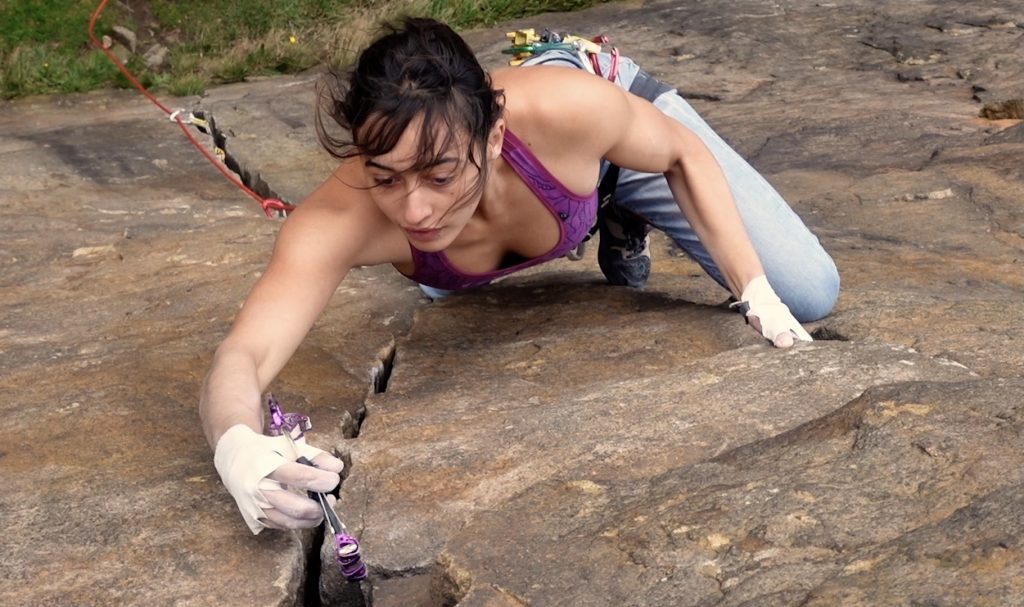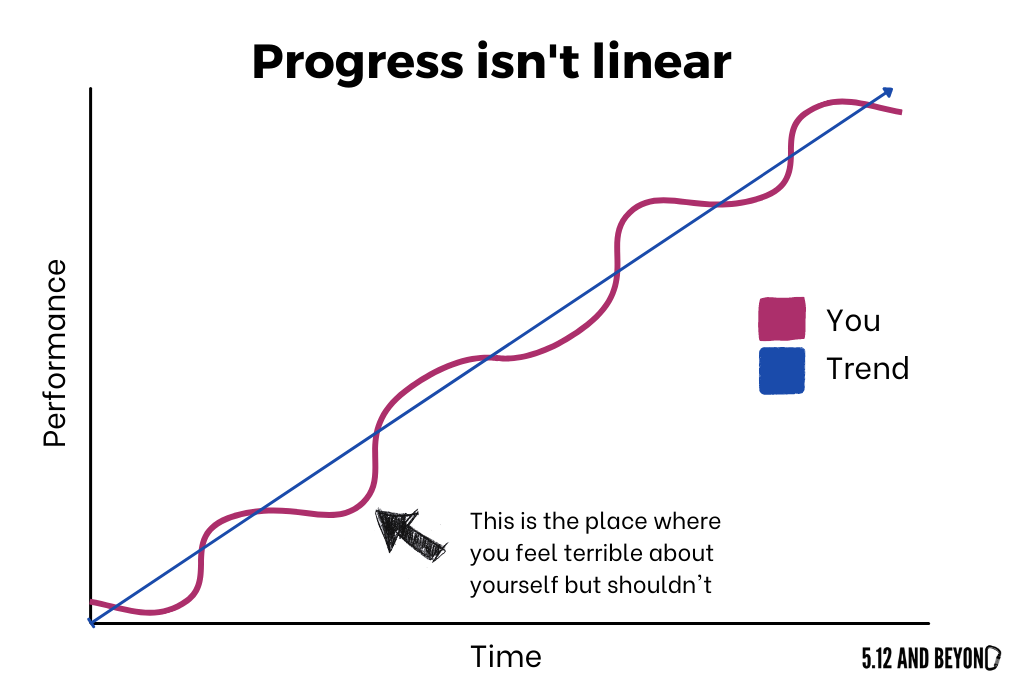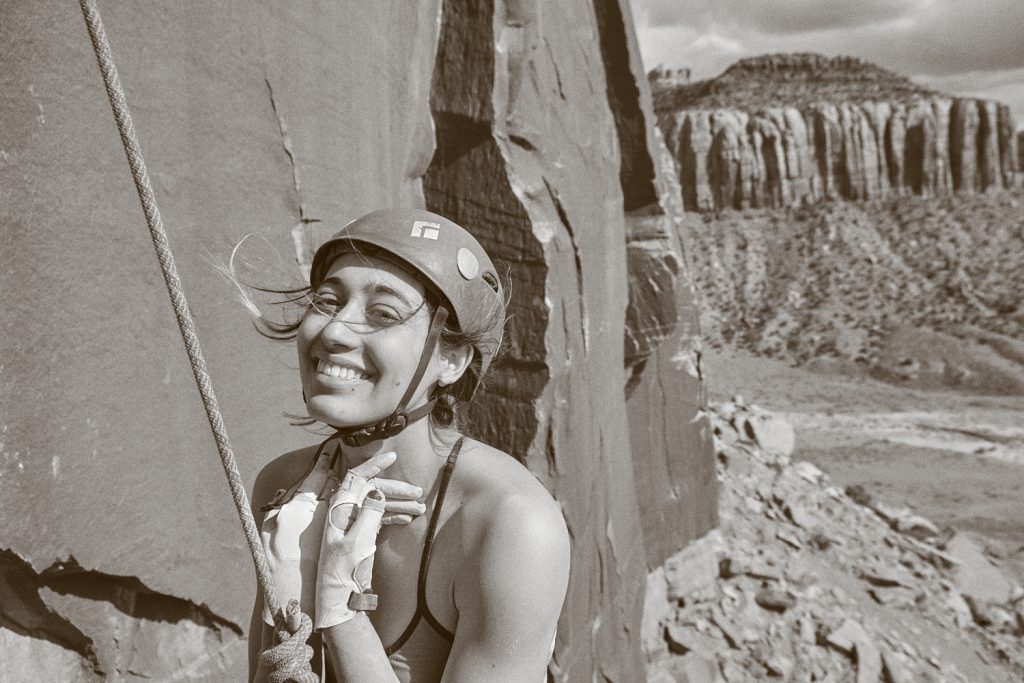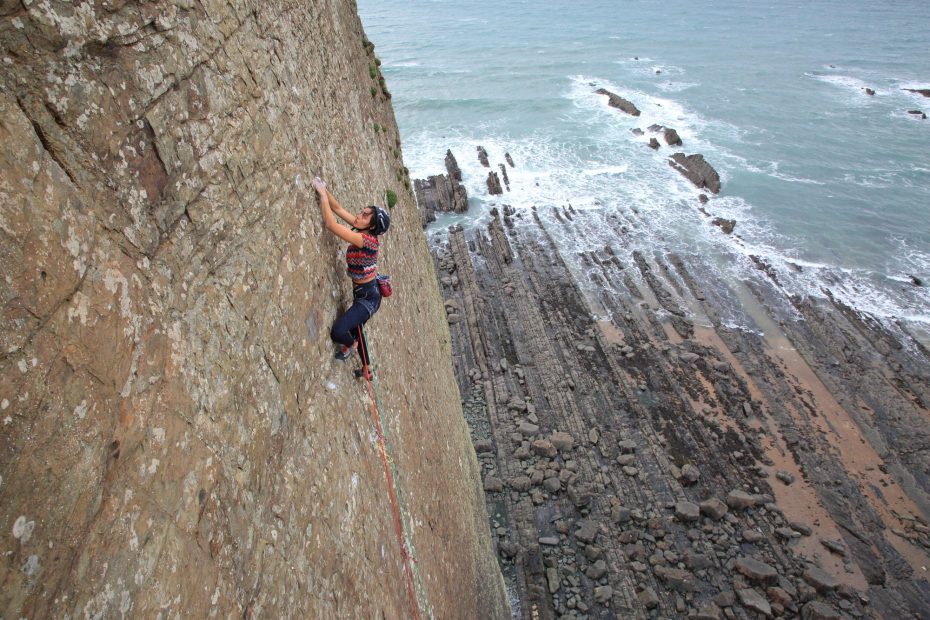Welcome to the first installment of The 5.13 Chronicles, featuring the one and only Anna Hazelnutt.
If you don’t know, Anna has sent 5.14a sport and E9 trad, so I figured she would have an insightful thing or two to say. Anna’s a filmmaker too, with a rad YouTube channel. And she actively seeks to support and represent queer Latina women in a sport where that is sorely lacking.
All in all, Anna kind of embodies everything I’m trying to do here: provide useful, insightful advice from all kinds of people, where everybody is represented and the content is relevant and applicable to all. Sounds achievable, right? *sweats*
I spent a lovely hour with Anna and, sure enough, she had plenty of insight. Let’s dig in.
Part One: Fear
Anna started off as a boulderer – and she considered herself to have a good head, having sent a number of highballs. But when she started sport climbing – just like the rest of us – Anna was scared. And I mean really scared.
“I was terrified of sport climbing and I would cry every day.”
This was right after the pandemic started. Anna was living in Spain, separated from her family in the US. It was, as she put it, “counterintuitive” that climbing highballs was fine, but climbing routes – even if the bolts were really close together – was terrifying.
So Anna took a break, thinking maybe sport climbing just wasn’t for her. But after that break – when she felt more mentally okay – Anna went out and climbed more routes, leading sport and following trad. And she realized something pretty important.
“It wasn’t about what I was doing, it was about my mental state at the time I was doing it.”
Anna wasn’t scared of sport climbing, per se. All climbing is scary, and it just so happened to be routes that Anna was climbing during this global period of uncertainty.
Between Covid, the BLM movement, and being stuck halfway around the world, Anna had a lot of fear, risk, and uncertainty to contend with. And she was beating herself up about being unable to sport climb. But, as humans, we only have so much capacity for any one thing, and Anna was maxed out: she just didn’t have the mental space for the fear, risk, and uncertainty that comes with pushing yourself in climbing.
Here’s the flipside
If climbing is harder when life is harder, it follows that climbing is easier when life is easier. “If I’m in a good mental space to start with then, really, I can do anything,” Anna says now. Like climb Once Upon A Time In The Southwest – one of the scariest routes in England. Hazel Findlay got the first female ascent, as documented in Reel Rock. Like, this is some serious stuff.

Anna says that it was a great atmosphere on the day. She trusted her belayer – Tom Randall, no big deal – and had people on the wall cheering her on. “It was just… like… I feel so good and everything’s okay. And I was just able to push past any fear.” Anna has a huge smile on her face while she’s telling me this, and I can feel the joy from the other side of the screen.
“But,” she says, “I know that if I had been sad or depressed starting that day, I couldn’t have done it. So I feel like I have both: a lot of fear and a lot of fearlessness.” And both of these things exist in the same timeline: Anna didn’t go from being extremely scared to extremely fearless. She is both, and they’re a function of the rest of her life – and your fearlessness is probably a function of the rest of your life too.
“If I’m climbing at the gym and the bolts are super close together, I might just freak out – or maybe I’ll be climbing outside and accidentally skip a bolt.” Sound familiar?
So what does this all mean?
We are non-linear, emotionally-driven, inconsistent humans. Our lives and our climbing are inextricably interconnected: we can’t expect to not take ourselves up the wall. That’s not to say we aren’t improving over time, just that there are ups and downs along the way. Your mental progress will look something like this…

… which means two things:
- If you’re struggling in your climbing, look at what’s going on in your life. We all like to blame ourselves first – especially when it comes to mental health – but sometimes that’s just not reasonable. Personally, I’ve fallen into the trap of wondering what’s wrong with me and why I can’t climb when I’ve been able to do hard and scary things in the past. But often the answer is outside of climbing: like, say, a global pandemic or a human rights movement. So be nice to yourself. Treat yourself like you would treat a friend in the same situation.
- This is something you can leverage for good. If life is going well, it’s probably a good time to push your climbing. Utilize those easier periods to maximize your growth. And when times are tough, it’ll make it that much easier to be nice to yourself: if you know that you push when things are good, you’ll have an easier time taking your foot off the gas when things are bad.

I asked Anna how to tell when you should push through and when you should be kind to yourself. She said that it’s just like an injury: you need to find out where the line is. When you climb and something hurts, you can probably tell whether it’s a stop-what-you’re-doing-right-now kind of pain, or if you can push through the session. Your brain is no different.
“Sometimes it’s too much to ask yourself to be fearless.”
It’s your job to figure out for yourself when you can be fearless and when you can’t – and to be gracious on both sides of the coin. Your relationship with climbing is really important, and when you beat yourself up about unreasonable things, you damage that relationship.
Anna has more insight into that. But you’ll have to wait for the second installment of this interview to find out. Stay tuned for Part Two: Failure.
Oh, and if you want to be sure not to miss it, follow me on Instagram or drop your email below – I’ll let you know when it’s out.
Featured image credit: Mike Hutton

Pingback: An Interview With Anna Hazelnutt – Part Two: Failure – 5.12 And Beyond
Pingback: An Interview With Anna Hazelnutt – Part Three: Climbing – 5.12 And Beyond